Zen and the art of laptop component
balancing good?
PC Specialist was the worthy winner of our
full system group test a couple of months back and fresh from its desktop
success, it's looking to woo us once again with this laptop offering.
Now, as PC Specialist is a straight system
integrator, we're not looking at a bespoke design or an all-new laptop here.
This Transformer-sounding Optimus IV machine features a rather basic, chunky
Clevo chassis design. The benefit of that, though, is the ability to drop in
whatever mobile components PC Specialist sees fit, or whichever you prefer via
its system configuration options.
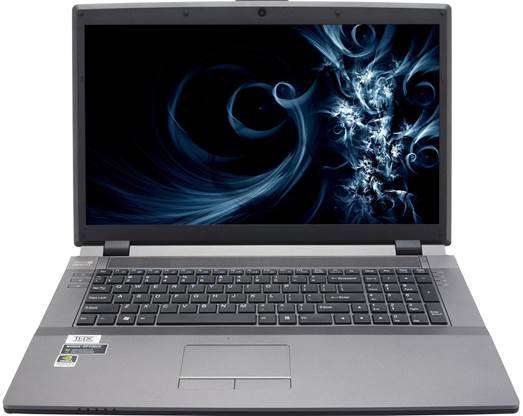
So while it's not going to win any design
awards with its plain grey lines and capacious girth, you should be able to fit
out a laptop with exactly the components you want.
Balance of power
PC Specialist's hallmark in the recent
group test was balance, and the specification it's offering with the Optimus IV
shows that it has the same goal in mind here.
As a sub- $1600 gaming laptop, it's tough
to argue against this setup. Its proper quad-core CPU (with Intel's
HyperThreading technology stretching that out to eight threads) and Kepler-based
GTX 660M give it just enough gaming performance to drive the 17.3-inch 1080p
panel.
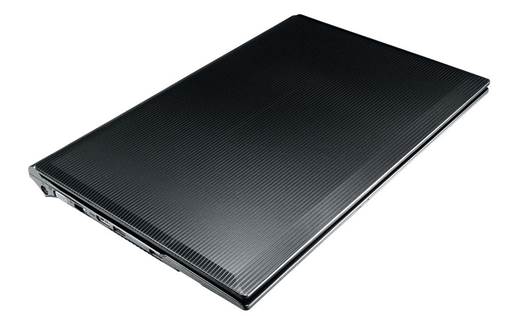
You won't be gaming at the highest settings
using your native resolution though. Realistically, such post-processing
goodies as multi-sample anti-aliasing are going to be out of reach if you want
to have games running at 1,920 x 1,080 at a decent frame rate, but with the
dot-pitch of modern laptops, there's an argument as to whether you really need
anti-aliasing on laptop panels anyway. With software layers, such as FXAA
offering a decent balance of image fidelity and performance, it's a sacrifice
that's easy to accept.
Using high levels of FXAA, we were able to
get very playable frame rates from both Sleeping Dogs and Max Payne 3 on high
graphics settings. Ideally, you'd want a more powerful GPU to drive thatl080p
screen, but for the money the GTX 660M isn't a bad option if you're willing to
sacrifice a few pretties.
Outside of the GPU and CPU combo, PC Specialist's
zen like obsession with balance shows itself in the storage setup. As with the
Scan machine, there’s a small SSD as a boot drive, but PC Specialist is able to
back it up with a 500GB HDD thanks to that larger chassis. With 90GB of speedy
SSD storage (less than 84GB formatted capacity) you won't get your entire Steam
catalogue on there, but you will be able to store a few of your favourites.
There's a generous 8GB DDR3 RAM in there too, so if you're looking for a more
rounded machine than just a gaming laptop, this setup will be good in
productivity terms too.
That17-inch panel may well be difficult to
power in-game, but as a general computing experience, that much screen real
estate is very pleasing to work on. You're not going to be turning any heads
with this functional, grey plastic slab of a laptop machine, but it's got a
decent balance of power under the hood.
Technical analysis
When we compare the Optimus IV to the wee
Scan 3XS machine (p42), things look pretty bad. But these benchmarks are at
each machine's native resolution - which means essentially 1080p vs 720p. This
shows the difficulty of powering a high-end screen with a mid-range GPU. Drop
these high settings down a bit and you'll quickly hit reasonable gaming frame
rates without too much sacrifice.
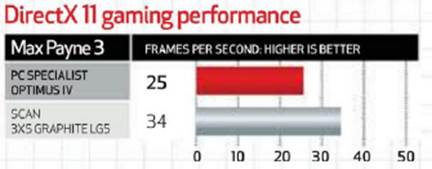
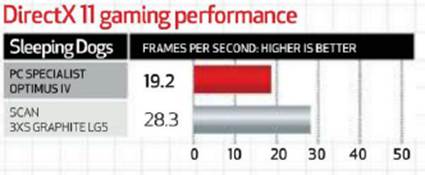
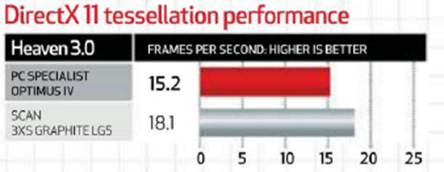
|
Vital statistics
§ Price:
$1280
§ Manufacturer:
PC Specialist
§ CPU:
Intel Core i73610QM
§ RAM:
8GBDRR31,333MHz
§ Graphics:
Nvidia GTX 660M
§ Storage:
90GB HyperX SSD, 500GB 5,400rpm HDD
§ Screen
size: 17.3in
|